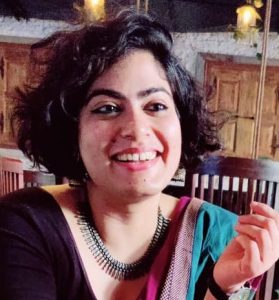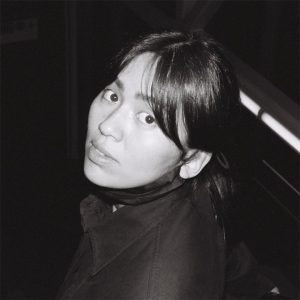The UBC Centre for Migration Studies (CMS) is very pleased to announce that after an extensive adjudication process, the following artworks have been awarded the first prize and honourable mention at this year’s international art competition, organized by the CMS Mobilities Research Group, in collaboration with the CMS Research Creation Research Group.
While the submissions were fiercely competitive and each spoke to the overall theme of migration in many ways, two stood out as the most original, thought-provoking and meaningful contributions to the space between art and scholarship that animates the field.
First Prize: Kakkemammalo Gintu, or The Song of the Crow by A.P. Payal
The illustration features the visualisation of a children’s lullaby from the Konkani people of India, a predominantly coastal community who after the Portuguese conquest of Goa made forced migrations from their homeland to various places in India. It gestures towards the forced exodus of Hindu Konkanis during the Portuguese Inquisition in colonial Goa that began in the sixteenth century and impacted successive generations. The artwork is a palimpsest comprised of collage, origami, ink drawings, and photographs. A musical accompaniment to the artwork can be found here.
In the artwork the lyrics of the Konkani lullaby are written in the Devnagari script. Here is the English translation of the rhyme:
“Oh Uncle Crow, have you to Goa been?
On the way to our Goan homeland, have you our little darling seen?”
“How is your little baby? Will you tell me, please?”
“Our little one is very very lovely,
Our baby is very very fair,
Our little darling is a gift from God,
Much cherished—the answer to our prayer.”


See more of A.P. Payal’s work here.
Honourable Mention: ‘Yarlung’ by Kunsang Kyirong
Sound design by Taymaz Saba; Voice actors- Kunsang Kyirong, Pema Kyirong, Tenzin Rabgyal
Yarlung tells the story of three children who experience the death of a loved one during the heat of midsummer in a small village. As they navigate this experience, they return time and again to the nearby Yarlung Tsangpo river — a fourth central figure in the story, with which each child has their own relationship. The film blends both fiction and nonfiction, drawing from my childhood experience of visiting a small refugee camp in the Northeast of India, called Tezu, where my mother was born. The use of charcoal and straight-ahead animation in the film add to the whimsical and fluid nature of storytelling.


See more of Kunsang Kyirong’s work here.
We congratulate the two winners and thank every artist who submitted their works to the competition and enriched the discussion in deeply meaningful ways.



